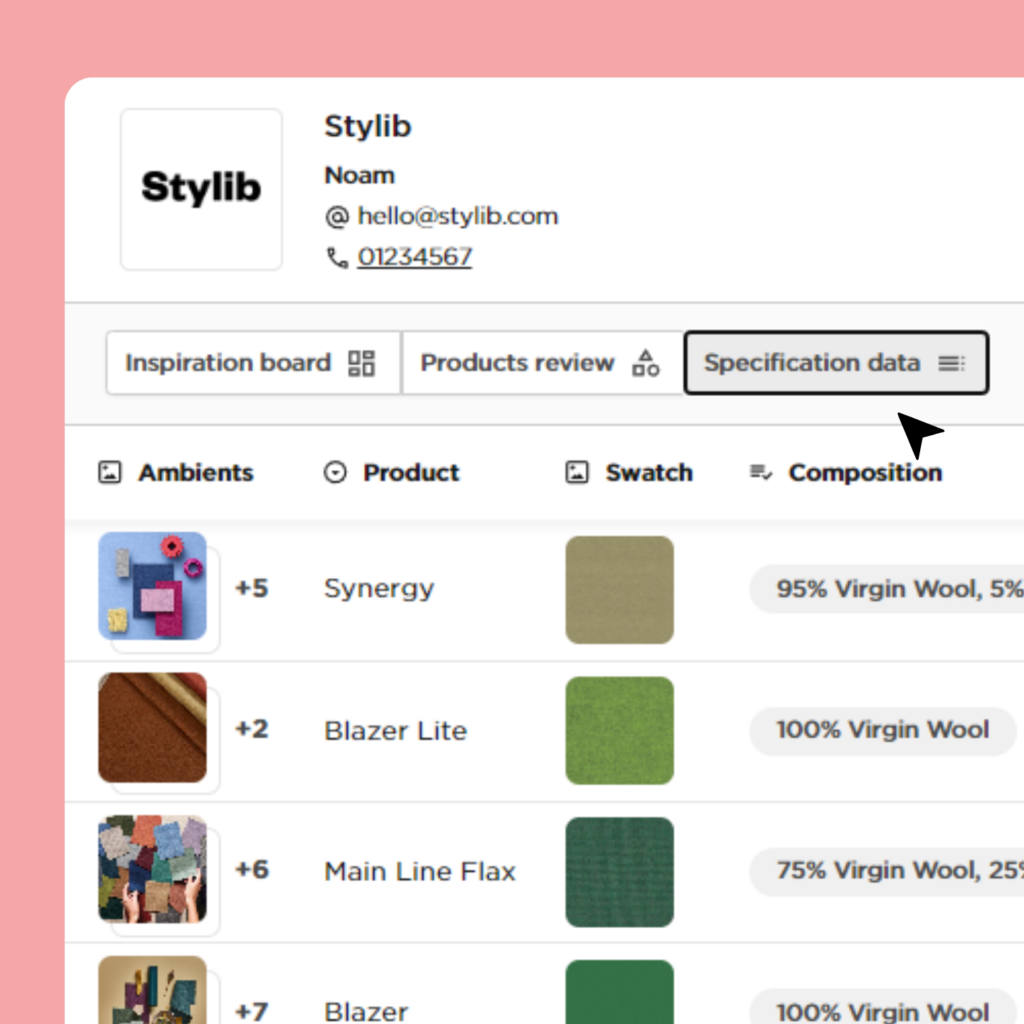
Soofia Fatima
Marketing executive @Stylib
The specification process for building materials has evolved. Architects, designers, and contractors now rely on digital tools to research, compare, and select products. For sales reps, understanding these changes is crucial—not just to stay relevant, but to actively influence the specification of your products.
The challenge with the traditional specification process
In the past, sales reps depended heavily on physical samples, printed catalogues, and PDF spec sheets. While effective in a controlled environment, this approach had limitations:
Slow updates – Specifications could quickly become outdated.
Limited reach – Printed materials and PDFs can only go so far.
Fragmented data – Reps had to reconcile information from multiple sources.
Manual follow-up – Tracking interest and engagement was time-consuming.
With architects increasingly working digitally, these methods no longer meet client expectations.
How the new specification process works
The modern specification process emphasises digital accessibility, accuracy, and interactivity:
Digital product catalogues – Architects browse your products online, filtering by attributes, certifications, and finishes.
Personalised presentations – Clients receive curated selections tailored to their project requirements.
Interactive spec sheets – Instead of static PDFs, product information is live, easy to navigate, and always up-to-date.
Analytics and engagement tracking – Sales reps can see who viewed or shared products, enabling timely follow-up.
Seamless collaboration – Internal teams, distributors, and clients work from the same trusted data.
In short, the focus has shifted from pushing information to making information easily discoverable, relevant, and actionable.
Why this matters for sales reps
Understanding the new specification process helps sales reps:
Influence decisions more effectively
Respond quickly to client requests
Reduce errors and miscommunication
Highlight the right products at the right time
Build stronger relationships with architects and designers
Tools that support modern specification
Stylib Hub provides a centralised platform for material data management, enabling sales reps to deliver accurate, up-to-date product specifications. With live data, curated catalogs, and collaborative workflows, Hub ensures your sales team can navigate the new specification process confidently and efficiently.
👉 See how Hub empowers sales teams in the specification process
Stylib Showcase lets you present your products in a format that’s built to impress with large images and clean layouts that highlight materiality, finishes, and context. Whether you’re sharing a single item or a full selection, the presentation is sharp, modern, and always aligned with your brand.

Instead of static PDFs or versioned attachments, Showcase presentations stay connected to your central product data. When you update a product, the changes automatically reflect in every shared presentation, meaning what your client sees is always accurate, current, and ready to specify.

With Showcase, you can create tailored product selections in just a few clicks, filtered by material, project type, or client need. Add a personal message, attach your logo, and share a unique link that’s easy to open, easy to share, and built to drive real engagement.

